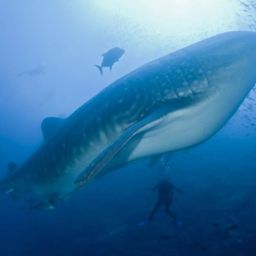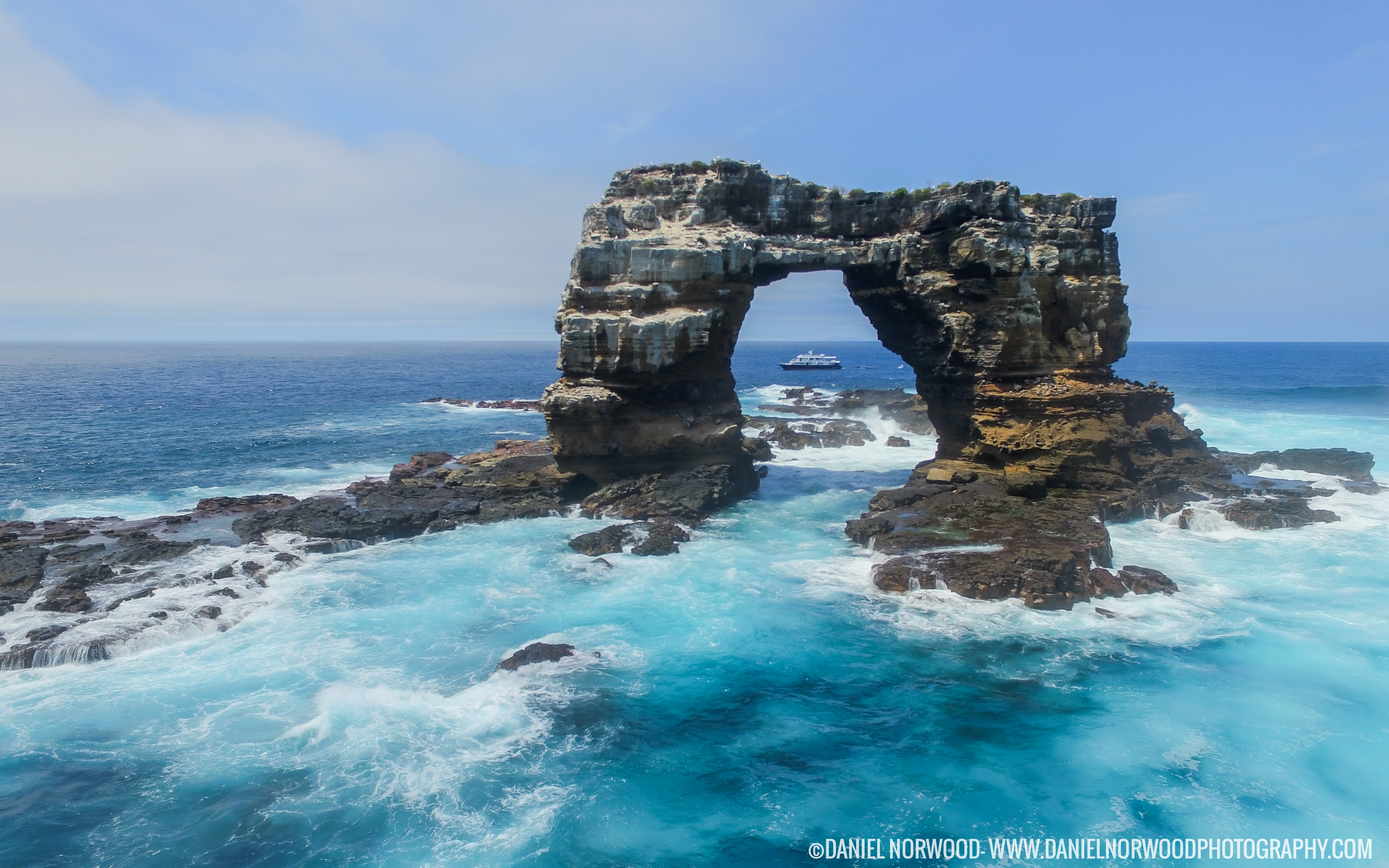Just four hours north of Wolf Island, the infamous Darwin Arch juts out of the water and marks the spot like an X on a treasure map for one of the best dives sites in the world, and certainly the best in the Galapagos. Diving near the uninhabited Darwin Island is only possible from a liveaboard due to its remote location from the Galapagos main islands.
The famous arch is the epicenter of all dives at Darwin Island, with the stars of the show circling around it beneath the waves. Divers back-roll off a panga into schools of various sharks and rays, and — if they’re lucky — dolphins make guest-starring appearances, usually during the safety stops, conducted away from the rocks. Many of the fish here are not found in other areas of the Galapagos, including the whale shark.
January through May offers warmer waters and higher chances of seeing mantas, but if whale sharks are what you seek, you’ll want to visit in the late summer, fall, or early winter when the massive fish head to the area to feed in the rich waters. If you’re really lucky, you might even spot a humpback or two, competing for the same food the whale sharks drop by to snack on.
The waters around Darwin Island stay in the 70s year round, but there’s generally a medium to strong current around the arch. This, combined with a depth of over 100 feet, makes this site unsuitable for newer divers. Folks who venture into these waters should be prepared for a lot of distraction, ebbing and flowing currents and choppy surface waves. Divers are given satellite beacons in case they get pulled too far out, and it’s recommended that each diver carry a surface marker buoy to deploy in case of separation from the group.
Regardless of the time of year you visit the Galapagos, taking the extra effort to dive at Darwin will be a decision you’ll never regret.




